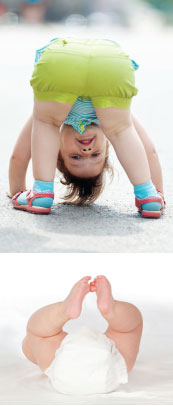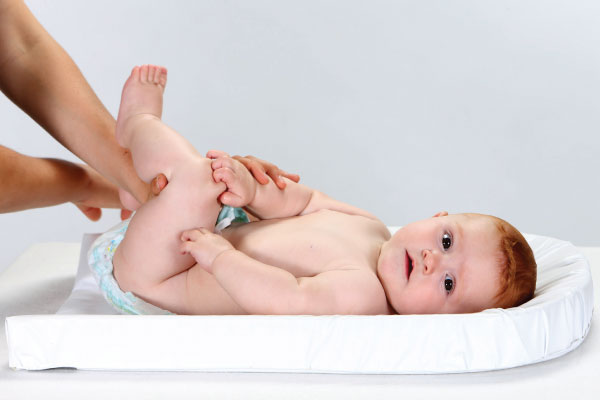Most babies get nappy rash at one time or another. If your baby falls victim, don’t worry, it doesn’t mean you’re a bad parent. Dr Jinan Harith Darwish sheds some light on the subject.
What is nappy rash?
Nappy rash is dermatitis confined to the area covered by the nappy. It is most commonly characterised by confluent redness of the convex surfaces of the buttocks, the areas of skin in closest contact with the nappy, and it spares the groin folds.
What causes nappy rash?
 Given that babies’ bottoms spend an average of two, or more, years encased in nappies, it’s no wonder that nappy dermatitis is such a common problem.
Given that babies’ bottoms spend an average of two, or more, years encased in nappies, it’s no wonder that nappy dermatitis is such a common problem.
Not putting a nappy on your baby will help him/her stay dry and avoid contact with faeces or urine. It is usually most convenient to leave the nappy off when the baby is asleep. You can lay him/her on an absorbent towel or somewhere where you can easily manage any soiling or wetting.
The main cause of nappy rash is the exposure of a baby’s delicate skin to human waste products that produce ammonia if the nappy is not changed for a length of time.
Sometimes the friction of the nappy against a baby’s sensitive skin or even traces of detergent left in washable nappies can be enough to lead to a rash.
It’s important to wash the baby’s bottom every time you change them. Avoid using wipes as they dry the skin and sting. If your baby has only wet his/her nappy, use warm water. If the baby has dirtied the nappy, use a little sensitive skin baby soap and always rinse in warm water to make sure there is no soap left on the baby’s skin.
How to tell the difference between nappy rashes?
An ordinary nappy rash is very red, but not bright red. The baby feels well in general, only feeling a sting when they’re wet or soil themselves. The redness does not reach into the folds of the skin and disappears after a few days of giving their bottom some air, using zinc oxide cream and frequently changing nappies.
A fungal infection is bright red. Check if your baby’s skin folds are red as well. The fungus can grow as the damp conditions are right. There may be spots further out on the buttocks. A fungal infection can be unpleasant for the baby because it can sting the skin especially when the baby wets or dirties its nappy.
A bright red, very warm and swollen rash may be caused by a bacterial infection. The baby may be irritable and have a fever. If so, contact your doctor.
Other skin conditions, such as infantile eczema, will exacerbate your child’s nappy rash.
What does medical evidence say?
The evidence supports frequent nappy changes, use of super absorbent nappies and protection of the perineal skin with a product containing petrolatum and/or zinc oxide.





































